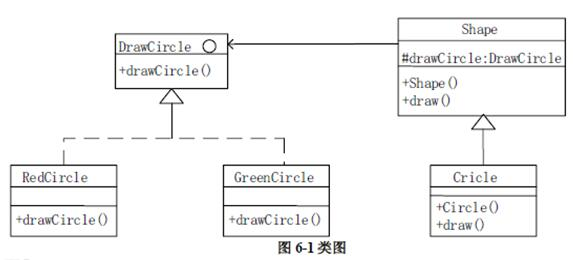有如下程序:includeusing namespace std;class Part{public:Part(int x=0):val(x){co有如下程序: #include<iostream> using namespace std; class Part{ public: Part(int x=0):val(x){cout< ~Part( ){cout<<val;} pritave: int val; }; class Whole{ public: Whole(int x,int Y,int z=
题目
有如下程序: #include<iostream> using namespace std; class Part{ public: Part(int x=0):val(x){cout< ~Part( ){cout<<val;} pritave: int val; }; class Whole{ public: Whole(int x,int Y,int z=0):p2(x),p1(Y),val(z){cout<<val;} ~Whole( ){cout<<val;} pritave: Part p1,p2; int val; f; int main( ){ Whole obj(1,2,3); return 0; } 程序的输出结果是
A.123321
B.213312
C.213
D.123123
相似考题
更多“有如下程序:#include<iostream>using namespace std;class Part{public:Part(int x=0):val(x){co ”相关问题
-
第1题:
有如下程序:includeusing namespace std;class Part{public:Part(int x=0):val(x) {c 有如下程序: #include<iostream> using namespace std; class Part{ public: Part(int x=0):val(x) {cout<<val;} ~Part(){cout<<val;} private: int val; }; class Whole{ public: Whole(int x ,int y, int z=0):p2(x),p1(y),val(z){cout<<val;} ~Whole(){cout<<val;} private: Part p1,p2; int val; }; int main() Whole obj(1,2,3); return 0; } 程序的输出结果是( )。
A.123321
B.213312
C.213
D.123123
正确答案:B
解析:此题考查的是类的构造与析构。在建立类的对象时,构造函数的执行顺序如下:执行基类的构造函数,调用顺序按照各个基类被继承时声明的顺序(自左向右),接着执行成员对象的构造函数,调用顺序按照各个成员对象在类中声明的顺序,最后执行自身的构造函数。析构顺序与之相反。本题中,Whole类中有两个Part类的成员p1和p2,根据它们定义的顺序,先构造p1再构造p2。所以,首先被构造的是p1(y),输出2;第二个被构造的是p2(x),输出1;最后调用析构函数,输出val的值3;析构函数调用顺序与构造函数相反。故最后输出213312。 -
第2题:
写出下列程序的运行结果【】。 includevoid func(double x, int &part1, double 写出下列程序的运行结果【 】。
include<iostream. h>
void func(double x, int &part1, double &part2){
part1=int(x)+500:
part2=(x+500-part1)*100;
}
void main( ){
int n;
double x, f;
x=1001. 0103;
func (x, n, f):
cout<<"Part 1="<<n<<" , part2="<<f<<end1
}
正确答案:part1=1501 part2=1.03
part1=1501, part2=1.03 -
第3题:
阅读下列说明和C++代码,填写程序中的空(1)~(6),将解答写入答题纸的对应栏内。
【说明】
以下C++代码实现一个简单绘图工具,绘制不同形状以及不同颜色的图形。部分类及其关系如图6-1所示。

【C++代码】
#include?#include?using?namespace?std;class?DrawCircle?{??????//绘制圆形,抽象类? ? ? public: (1);//定义参数为?int?radius,?int?x,?inty? ?virtual~DrawCircle()?{?}};class?RedCircle:public?DrawCircle?{????//绘制红色圆形? ? ? ? public: void?drawCircle(intradius,?int?x,?int?y)?{cout?<?drawCircle?=?drawCircle;? }? ?virtual~shape()?{?}? public:? ?virtual?void?draw()?=?0;};class?Circle:public?Shape?{????//圆形? ? private:? ? ?int?x,y,radius;? ? public:? Circle(int?x,inty,int?radius,DrawCircle?*drawCircle)? (3)? {? this->x?=?x;? ?this->y?=?y;? ? this->radius?=?radius; }? ? ? public:? void?draw(){? drawCircle?-> (4); }};int?main(){Shape?*redCirclenew?Circle(100,100,10,????(5)????);//绘制红色圆形? Shape?*greenCircle=new?Circle(100,100,10, (6)??);//绘制绿色圆形redCircle >draw();? ?greenCircle?->draw();? ?return?0;}答案:解析:(6)(1)void drawCircle (int radius,int x,int y)
(2)DrawCircle*drawCircle
(3)drawcircle
(4)drawCircle(radius,x,y)
(5)new RedCircle()
(6)new GreenCircle()【解析】
第一空是填接口里面的方法,在接口的实现里面找,可以发现应该填void drawCircle (int radius,int x,int y)。
第二空可以根据后面this drawCircle=drawCircle判断,这里应该有一个drawCircle属性,因此应该填)DrawCircle drawCircle。
第三空这里填drawcircle,用-> drawcircle来引用父类的成员。
第四空调用drawCircle(radius,x,y)方法。
第五、六空分别创建一个红色圆形对象和一个绿色圆形对象作为Circle里面的实参。 -
第4题:
如下程序的输出结果是includevoid fun(int & X,inty){intt=x;x=y;y=t;}int main(){in 如下程序的输出结果是 #include<iostream> void fun(int & X,inty){intt=x;x=y;y=t;} int main( ){ int a[2]={23,42}; fun(a[1],a[0]); std::cout<<a[0]<<","<<a[1]<<std::endl; return 0; }
A.42,42
B.23,23
C.23,42
D.42,23
正确答案:B
解析:参数X是引用传递,传递的是地址:参数Y是值传递,函数fun( )是做X与Y值交换,交换后X的值要被回传给a[1],此时a[1]=a[0]=23。 -
第5题:
有如下程序: #jnClude<iostream> using namespaCe std; Class Part{ publiC: Part(int x=0):val(X){Cout<<val;} ~Part{Cout<<val;} private: int val; t }; Class Whole{ publiC: Whole(int x,int Y,int z=0):p2(x),pl(y),val(z){Cout<<val;} ~Whole{eout<<val;} private: Part pl,p2; int val; }; int main { Whole obj(1,2,3); return 0; } 执行这个程序的输出结果是( )。
A.123321
B.213312
C.213
D.123123
正确答案:B
本题考查带参数的构造函数。本题中定义了一个对象obj,那么执行其构造函数,初始化p1,p2的顺序是由声明这两个成员的顺序决定的,而不是由参数化列表顺序决定,所以本题中,会先执行p1,输出2,然后执行p2输出1,然后输出3,最后一次输出312。所以本题答案为8。
